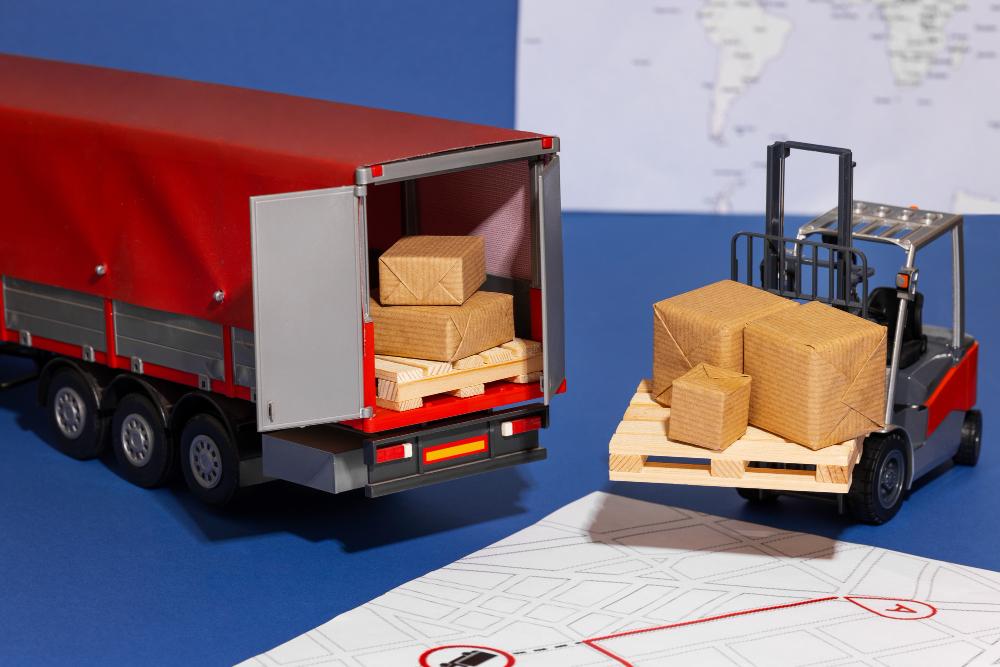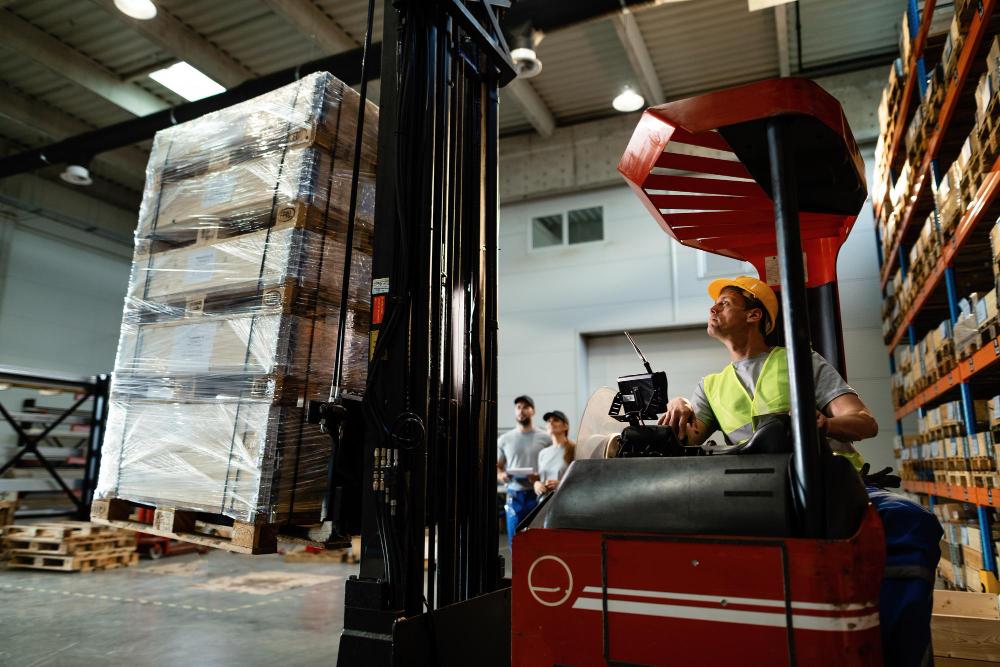Whether you handle your own shipping or you’re looking for a third party business to handle part of your supply chain, you might have heard the term transloading. It’s a shipping term that describes the way you’ll transport your cargo across your supply chain.
However, you should first understand it to know how and whether you should use it. Once you understand how it works and its advantages, you can judge if its benefits are worthwhile for your business.
In this blog, we’ll explore how transloading works, the equipment used to handle materials, and why it’s an important practice.
What Is Transloading in Logistics?
Transloading is a logistics term that refers to shipment across multiple types of transportation. For example, if your business transported your finished product by truck from your factory to a rail yard. Then, the shipment could continue its journey to a seaport. After its journey via ship, your cargo could arrive at a retail store by truck.
As you change transport mode, you can consolidate, rearrange, separate, or even repackage your cargo. Additionally, it includes onloading, transferring cargo between containers, and off loading. Since container size and type are often standardized, these processes are simple to do with material handling equipment.
The Types of Transloading
The type of transloading you require depends on the speed you require, the containers you have access to, and whether you need to further process your cargo. When it comes to transporting good through multiple modes, there are also these types of transloading:
Intermodal
Intermodal transloading is a type of transportation of cargo whereby there are two different modes. Additionally, it involves standardized containers that can go from one mode of transport into another without offloading the container. For example, it could be a metal container that fits both on rails and on a truck. Since you don’t need to off load the container, this type of transloading can be a faster option.
Cross-Docking
Cross-docking refers to when you take inbound cargo straight to the outbound station. If this transfer of cargo happens between one mode of transport to another, it’s also transloading. Usually, it’s an immediate transfer that involves no repackaging or further manufacturing. Plus, as you transfer the cargo between modes of transport you can separate the cargo for different destinations.
The Equipment Used in Transloading
You or the third party logistics company you hire will handle your cargo with the following transloading equipment:
- Forklift: If you need to move cargo stacked on pallets, you can use a forklift. It works by lifting cargo with its ‘arms’. Then, you can transport your cargo to another mode of transportation.
- Conveyors: These are flat surfaces that move to transport your cargo. They’re often used in airports and warehouses.
- Pallet Trucks: They are a light weight vehicle you can use to transport cargo on pallets.
- Grain/Bucket Elevator: When moving cargo vertically such as in a warehouse, you may require these types of elevators.
- Robots: Automated machines such as automated guided vehicles can carry cargo on specific routes before it continues on its journey. You can use magnets and programming to decide how they’ll move.
- Tail Lift: This is a device attached to the back of trucks to lift cargo. Once it has raised the cargo, you can easily move it into the truck.
Why Is Transloading Important?
Now that you understand what transloading in logistics is and what it involves, let’s explore why it’s crucial to your business.
Cost Reduction
Transloading allows you to reduce the cost of transport by letting you leverage the prices of different modes of transportation. While trucks are often the first and last mode of transportation in your goods’ journey, ship and train transportation are much cheaper. Therefore, you can use the most cost-efficient mode of transport at every step.
Moreover, you can consolidate your cargo in transloading facilities into fewer containers. For instance, while your goods may take 4 trucks to deliver to the rail yard, you might be able to consolidate all of your cargo into 2 containers on the same train.
Increased Reach
Since transloading allows you to transport your cargo across geographical barriers such as mountains and oceans, it increases your reach. With transloading, you have the flexibility in transportation to reach customers anywhere. For example, though land and water separate Alaska from the rest of the USA, you can reach customers living there through ships.
Opportunity for Business Growth
Since transloading gives you access to customers everywhere, you have the opportunity to grow your business by targeting them. Plus, you can use the savings you’ve made through transloading to further invest into your business. Therefore, you have an advantage over other businesses that use only one mode of transport.
Increased Convenience
With transloading, you can increase the specificity of the last step in the journey of your cargo. Since you have access to multiple modes of transport you can use a truck at the end to send your cargo to a specific address. By comparison, if you could only transport your goods via one mode, you would limit your target customers to a geographical area or your customers would need to come to you at the airport or sea port.
Moreover, transloading gives you options that affect the speed of your deliveries. While you could transport cargo through slow ships, you can also opt for fast planes when the goods have a short shelf life or the delivery is otherwise time-sensitive.
Conclusion
Now that you know what transloading in logistics is, you understand that it’s the transportation of cargo through multiple modes. You can use trucks, ships, planes, and trains in any combination. However, most cargo journeys start and end with trucks since they can go to specific destinations. Meanwhile, ships and trains are more cost-efficient. Lastly, planes offer the quickest service. Examining the features of these modes exposes how they can reduce your costs and increase your customer reach. Then, you can leverage these different modes to optimize your supply chain. Therefore, if you’re looking for the opportunity to grow your business, consider transloading.





